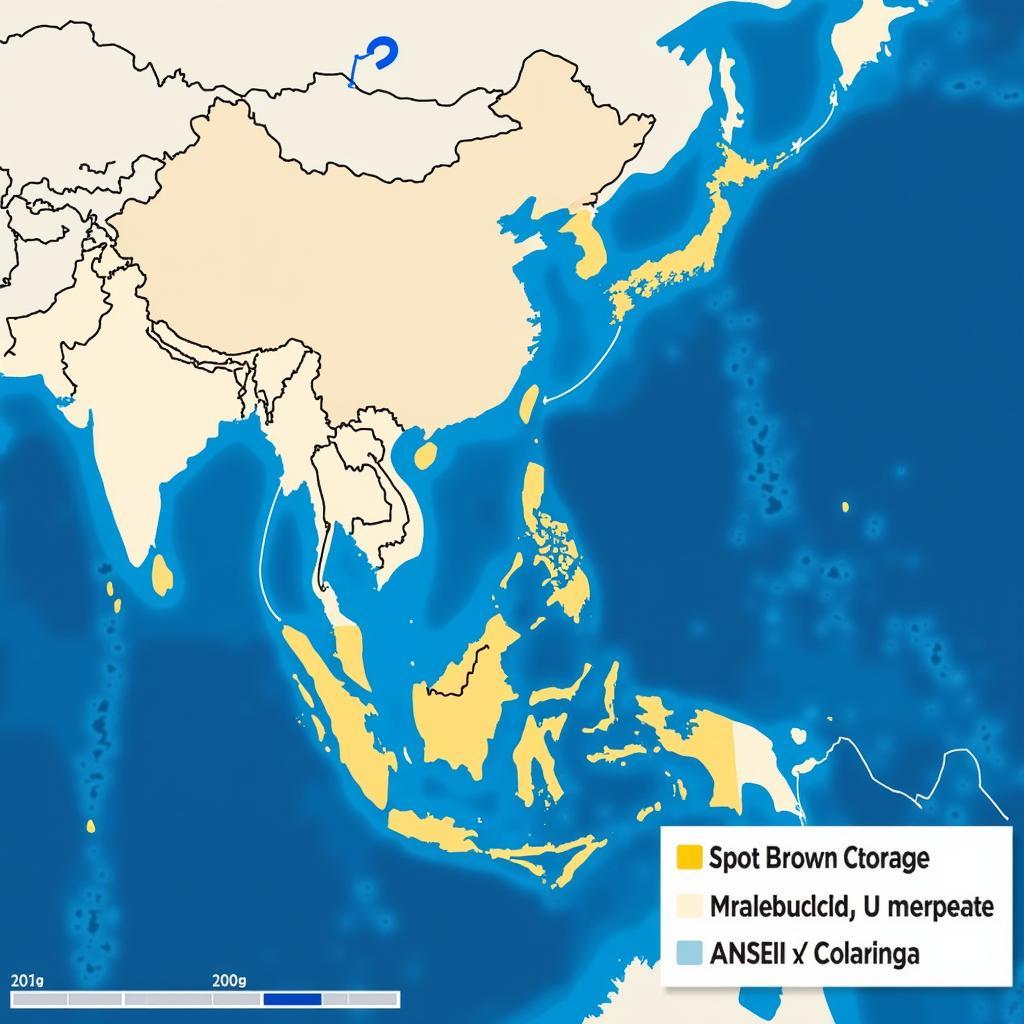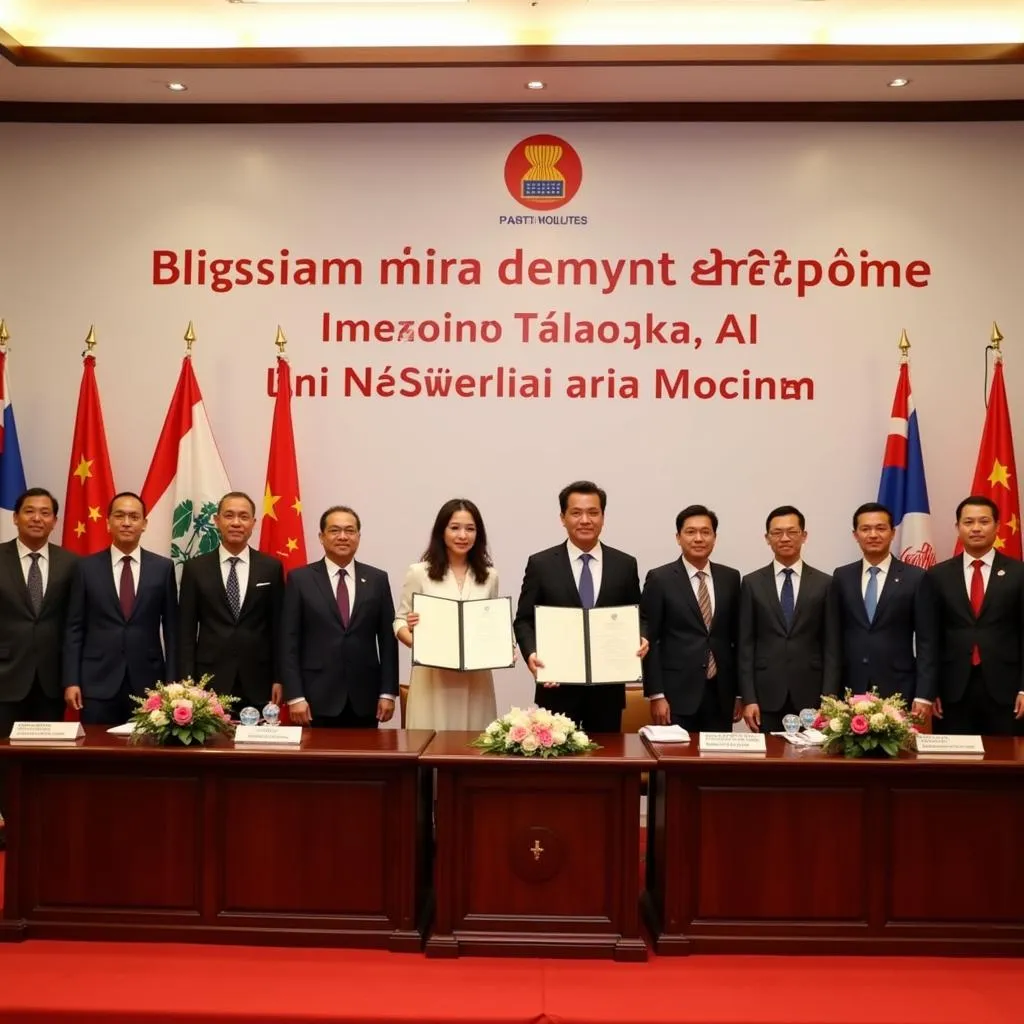Satellite communications have emerged as a transformative force in bridging the digital divide and fostering economic growth, particularly in geographically diverse regions like Southeast Asia. ASEAN, with its vast archipelago and varied terrain, faces unique challenges in ensuring widespread internet connectivity. This is where satellite technology plays a crucial role, offering a reliable and cost-effective solution to connect the unconnected and empower communities across the region.
 Satellite Coverage Map of ASEAN Region
Satellite Coverage Map of ASEAN Region
The Expanding Role of Satellite Communications in ASEAN
The demand for reliable and high-speed internet access has skyrocketed in recent years, driven by the rapid adoption of smartphones, the rise of e-commerce, and the increasing digitalization of various sectors. Recognizing the pivotal role of connectivity in achieving its socio-economic goals, ASEAN has placed a strong emphasis on leveraging satellite communications to bridge the digital divide and accelerate digital transformation.
Overcoming Geographical Barriers
One of the key advantages of satellite communications lies in their ability to transcend geographical limitations. Unlike terrestrial infrastructure, which can be challenging and expensive to deploy in remote areas or across numerous islands, satellites can provide coverage across vast distances and challenging terrains. This makes them an ideal solution for connecting underserved populations in rural areas, mountainous regions, and archipelagic nations within ASEAN.
“Satellite technology has been instrumental in extending internet connectivity to remote islands and mountainous areas in Indonesia,” notes Dr. Anita Lim, a telecommunications expert specializing in Southeast Asian markets. “It has enabled us to bring educational resources, healthcare services, and economic opportunities to communities that were previously excluded from the digital economy.”
Enabling Disaster Preparedness and Response
ASEAN countries are highly susceptible to natural disasters such as floods, earthquakes, and typhoons. In the aftermath of such events, terrestrial communication infrastructure is often severely damaged, isolating affected communities and hindering relief efforts. Satellite communications provide a critical lifeline in these situations, enabling emergency responders to coordinate relief efforts, restore communication lines, and provide vital information to affected populations.
Fostering Innovation and Economic Growth
By providing widespread internet access, satellite communications are unlocking new opportunities for innovation and economic growth across ASEAN. Businesses in various sectors, from agriculture and fishing to tourism and logistics, are leveraging satellite-enabled connectivity to improve operational efficiency, expand their reach, and connect with global markets.
Challenges and Opportunities for ASEAN Satellite Communications
While the future of ASEAN satellite communications appears promising, several challenges need to be addressed to unlock its full potential:
- Spectrum Management: Effective spectrum allocation and coordination are crucial for ensuring the efficient operation of satellite services and preventing interference issues.
- Affordability: The cost of satellite-based internet services remains a barrier for many users in ASEAN, particularly in low-income communities.
- Infrastructure Development: Investing in ground infrastructure, such as satellite dishes and user terminals, is essential for ensuring widespread access to satellite-based services.
To overcome these challenges and harness the transformative power of satellite communications, ASEAN member states are actively collaborating on several fronts:
- Harmonizing Regulatory Frameworks: Efforts are underway to harmonize regulations related to satellite licensing, frequency allocation, and cross-border service provision.
- Promoting Public-Private Partnerships: Governments are partnering with private sector players to leverage their expertise and resources in developing innovative and affordable satellite-based solutions.
- Developing Local Expertise: Capacity building programs are being implemented to nurture a skilled workforce capable of designing, operating, and maintaining satellite communication systems.
Conclusion
As ASEAN continues its journey towards becoming a digitally connected and economically integrated community, satellite communications will play an increasingly vital role. By addressing existing challenges and fostering an enabling environment for innovation, ASEAN can harness the full potential of satellite technology to bridge the digital divide, empower its citizens, and drive sustainable growth across the region.
FAQs about ASEAN Satellite Communications
1. What are the main applications of satellite communications in ASEAN?
Satellite communications in ASEAN are used for a wide range of applications, including:
- Providing internet access to remote and underserved areas.
- Enabling e-learning and telemedicine services.
- Supporting disaster management and emergency response efforts.
- Facilitating maritime and aviation communications.
- Connecting businesses and government agencies across vast distances.
2. What are the advantages of satellite communications over terrestrial infrastructure in ASEAN?
Satellite communications offer several advantages over terrestrial infrastructure in the ASEAN context:
- Wider Coverage: Satellites can cover vast geographical areas, including remote islands and mountainous terrains, where terrestrial infrastructure is difficult to deploy.
- Faster Deployment: Satellite-based networks can be deployed much faster than terrestrial infrastructure, especially in disaster-stricken areas.
- Greater Resilience: Satellite communications are less susceptible to disruptions caused by natural disasters, making them a more reliable option in disaster-prone regions.
3. What are some of the challenges facing the growth of satellite communications in ASEAN?
The growth of satellite communications in ASEAN faces challenges such as:
- High Costs: The cost of satellite bandwidth and equipment can be prohibitive, particularly for individual users and small businesses.
- Regulatory Hurdles: Complex and fragmented regulations across ASEAN countries can hinder the deployment of satellite services.
- Limited Awareness: Lack of awareness about the benefits and applications of satellite communications among potential users can slow down adoption rates.
4. How are ASEAN member states collaborating to promote the development of satellite communications?
ASEAN member states are collaborating through various initiatives to promote satellite communications, including:
- Harmonizing regulations: Efforts are underway to harmonize spectrum allocation, licensing procedures, and cross-border service provision.
- Sharing best practices: Member states are sharing their experiences and best practices in deploying and utilizing satellite technology.
- Promoting investment: Governments are encouraging private sector investments in satellite infrastructure and services.
5. What is the future outlook for ASEAN satellite communications?
The future of ASEAN satellite communications appears promising, driven by factors such as:
- Increasing demand for connectivity: The rapid growth of internet usage and digital services is fueling demand for reliable and high-speed connectivity.
- Technological advancements: Advancements in satellite technology are making services more affordable, accessible, and efficient.
- Government support: ASEAN governments recognize the importance of satellite communications and are actively supporting its development.
For further inquiries or assistance, please contact us:
Phone: 0369020373
Email: [email protected]
Address: Thon Ngoc Lien, Hiep Hoa, Bac Giang, Vietnam
Our dedicated customer support team is available 24/7 to address your queries and provide comprehensive solutions.


